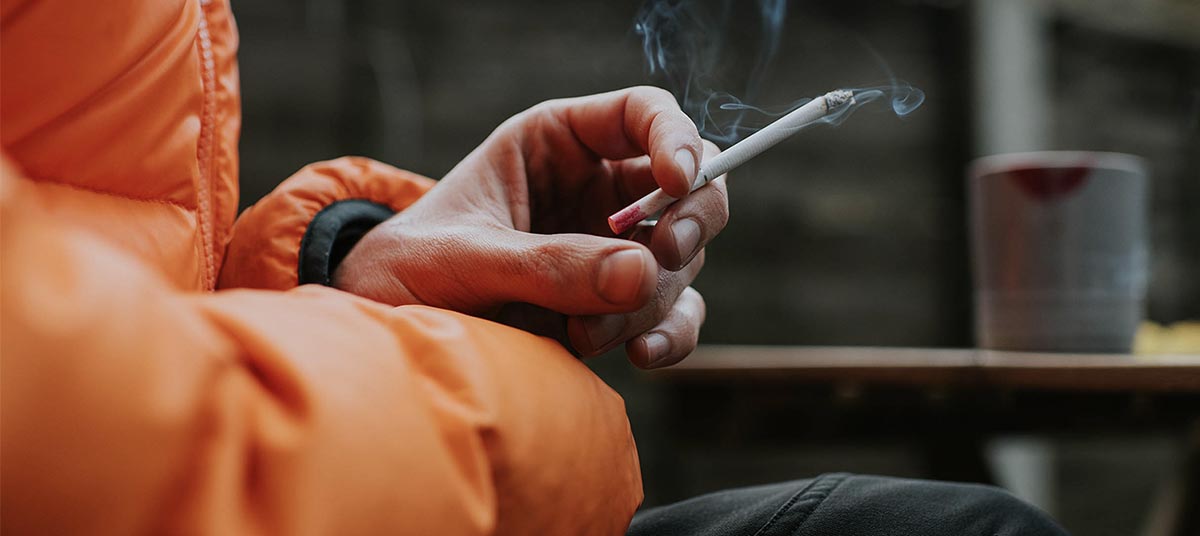Cigarette Taxes Ignite Indiana's Modern-Day Bootlegging

In Indiana, the recent cigarette tax surge is more than a fiscal strategy—it's a nod to the state's historic bootlegging roots. As the state imposes higher taxes per pack, lawmakers are implementing stringent measures to curb smuggling, reminiscent of the Prohibition-era crackdowns on moonshiners and racketeers.
Transport back to the 1930s, where historical accounts detail the shutdowns of illegal bootleg operations. Today, the battlegrounds have evolved from clandestine stills to highways and shopping centers, as thrifty smokers sidestep taxes by crossing state lines or taking advantage of bulk purchase opportunities.

Kentucky's extremely low cigarette tax—a mere 10 cents per pack against Indiana's $1—positions it as a hotbed for illegal exports, with smuggling routes crisscrossing states. Tennessee, too, experienced a rise in bootleg cigarette hubs near its borders post-tax hikes in the early 2000s, likened to the classic "beer flats" but for tobacco.
Yet, the narrative is layered. A 2018 study by Johns Hopkins Bloomberg School of Public Health's Tobacconomics program evaluated states, including Indiana, raising cigarette taxes by 50 cents or more. Since Indiana's 2007 increase from 55¢ to 99.5¢ per pack, revenues climbed 43% in the following year, while neighbors experienced modest declines, illustrating that higher taxes can elevate net revenue despite smuggling fears.
It's a nostalgic recurrence with a modern spin, where Indiana pursues cigarette traffickers as it once pursued bootleggers.
Revamped Enforcement: New Law's Details
Effective July 1, Indiana’s cigarette tax doubles, with the enactment of robust enforcement mechanisms:
Felony charges for large out-of-state purchases, turning high-volume trafficking into serious offenses.
Increased task forces, including Excise and state police, to scrutinize shipments at toll stations and warehouses.
Mandatory audits of wholesalers and retailers to catch phony tax stamps.
Anticipated revenue effect: $290 million annually, designated for public health initiatives.

Cross-Border Temptations and System Vulnerabilities
The real challenge remains enforcement. Indiana’s closeness to states with lower taxes, like Kentucky, primes it for illicit trade. A Tax Foundation report placed Indiana among the top 10 states expected to encounter significant cigarette smuggling hikes after tax increases, citing a "high likelihood of consumer evasion through cross-border shopping and gray-market activities."
Ohio, with its low cigarette tax and dense road network, poses a similar risk. As per a 2024 Mackinac Center analysis, nearly 12% of cigarettes consumed in Indiana could trace back to purchases outside the state in the initial year after the tax increase.
State Strategies: Illinois & New York
Illinois:
The state's recent hike in nicotine taxes to 45% of wholesale elevates the smuggling threat.
It is estimated that approximately 30% of cigarettes consumed are smuggled.
Stiff penalties are in place for unstamped packs, leading to a contraband spike following its 2019 $1 tax increase.
New York:
With the highest combined taxes nationwide (state + NYC), New York's smuggling rates have soared above 50%, peaking at 61% post the latest $1-per-pack increase.
The Albany-based Bureau of Alcohol, Tobacco & Firearms, alongside the state’s Tax Enforcement Office, enforce anti-trafficking laws for large-scale operations.

Legacy of Indiana’s Illicit Economy
Bootlegging sits deep in Indiana's economic history. During Prohibition, the state was a center for vibrant moonshine circles, especially in Southern Indiana’s rural counties like Lawrence and Dubois. Back then, moonshine was discreetly moved at night down roads nicknamed “Whiskey Roads.”
Today, the medium—packs instead of barrels—may have changed, but the tactics remain uncannily similar: find legal loopholes, exploit physical geography, and covertly transport goods.
Ex-Indiana Excise officer John Halverson agreed with the parallels: "Back then, it was stills in barns. Now it’s cartons in car trunks."
Public Health Victory or Policy Hazard?
Not everyone perceives the smuggling escalation as a policy misstep. Public health advocates assert that even if some smokers sidestep the tax, overall higher prices cut smoking rates, notably among teens and low-income groups.
Mike Seilback, the National Assistant Vice President for Advocacy at the American Lung Association, expressed to The Indiana Capital Chronicle,
"Higher tobacco prices are unquestionably the most effective means to cut smoking. We expect many Hoosiers to quit and even more young individuals never to start."
With smuggling rates estimated between 10–30%, research indicates states can experience noteworthy net revenue gains post-tax hikes—provided enforcement remains diligent. Indiana’s 2007 experience—a 41% reduction in sales but a 43% increase in revenue—illustrates this pattern.
Success Probability of the Strategy?
Indiana stakes a significant claim on this strategy's success. But whether it pays off extends beyond mere revenue estimations. Can the state maintain a balance between deterrence and enforcement? Will local retailers adjust? And will the new-age smugglers—modern-day moonshine runners in SUVs and rental vans—continue to outwit the law?
The verdict remains pending. For now, the 1930s spirit prevails along the Midwest's rural routes. The stakes are higher, the vehicles brisker, and counterfeit tax stamps more challenging to reproduce—but the age-old chase persists.
Sign up for our newsletter.
Each month, we will send you a roundup of our latest blog content covering the tax and accounting tips & insights you need to know.
We care about the protection of your data.